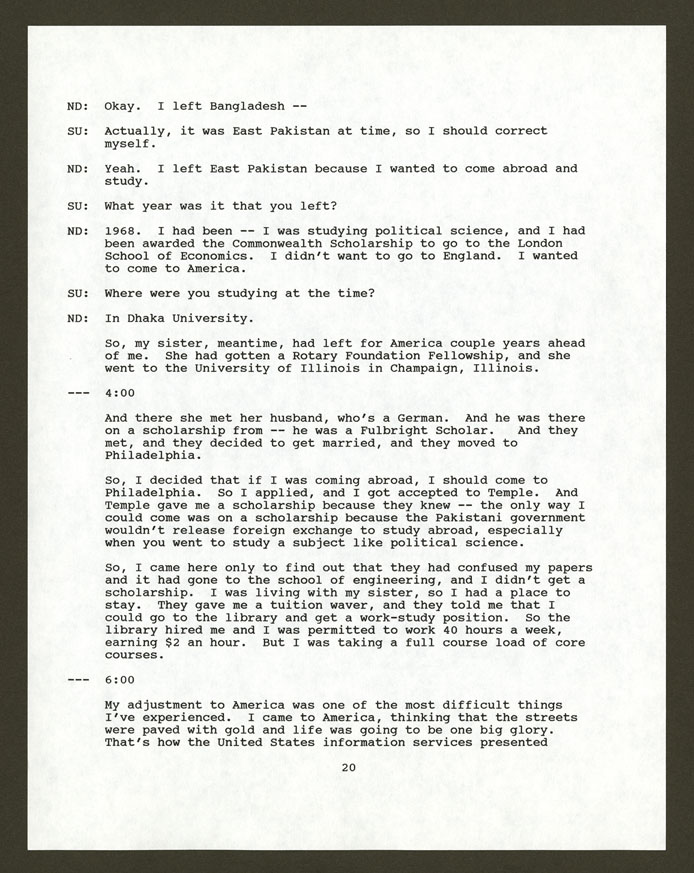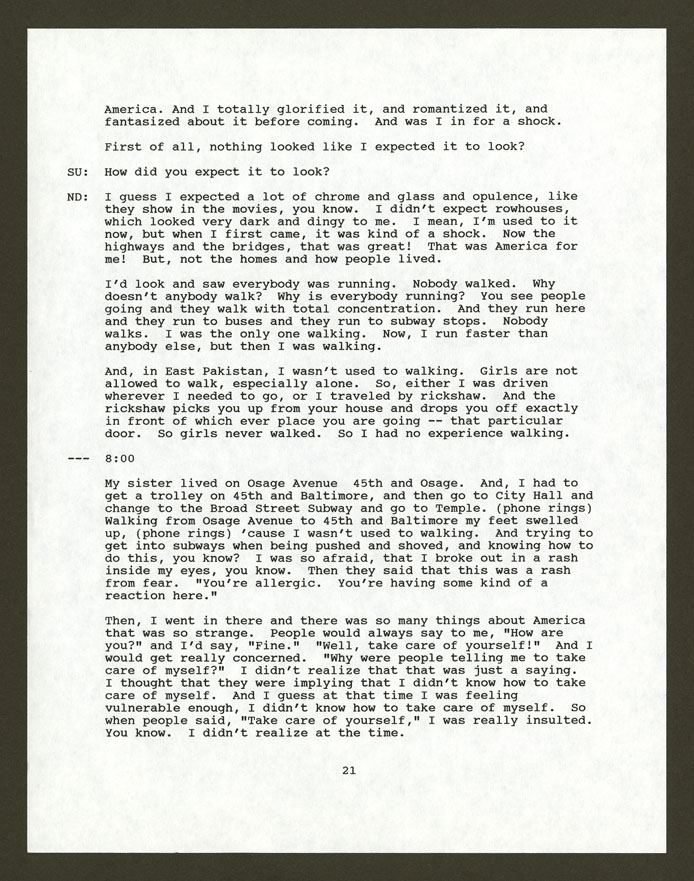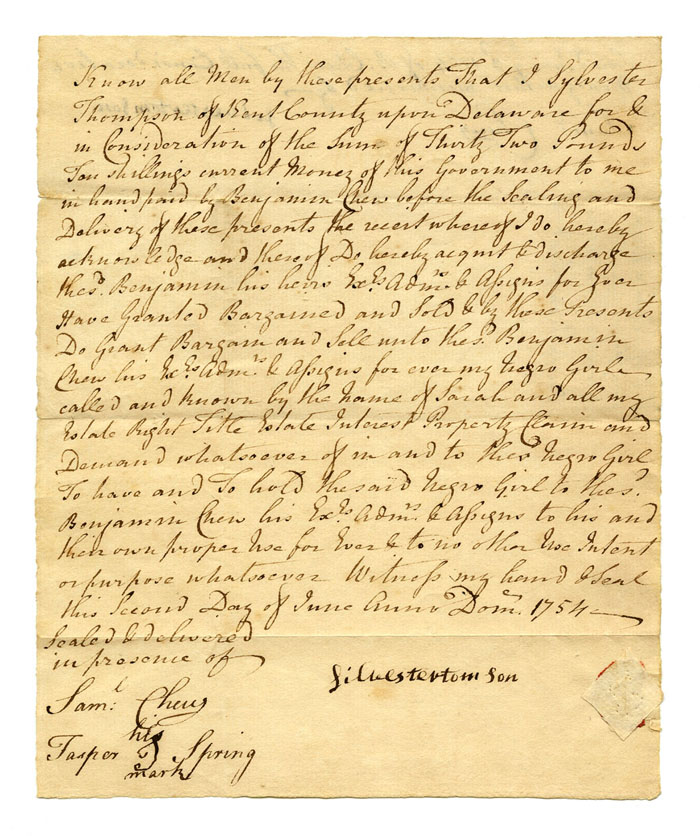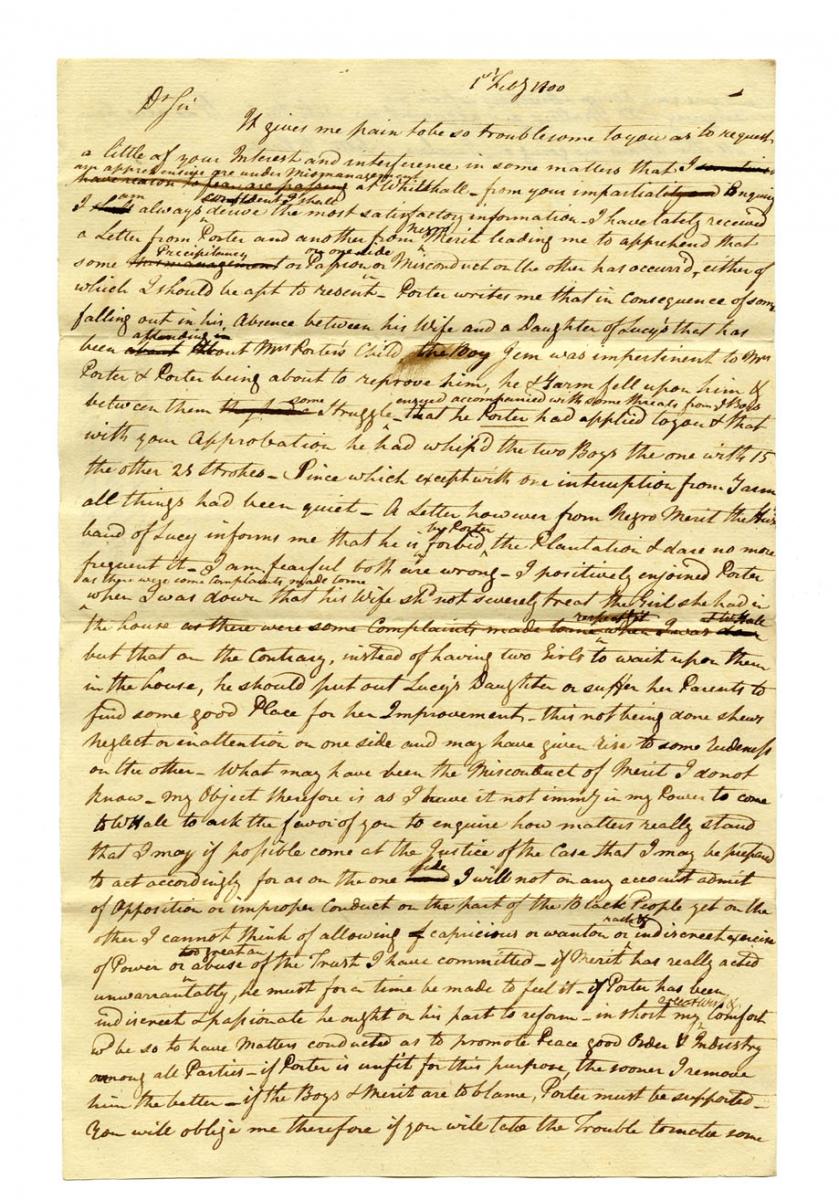With part two of the Digital Center for Americana project underway, collections coming up the digital library pipeline include family album watercolors and oral history sound recordings that provide unique glimpses into Philadelphia family life, as well as how family life changes when individuals leave their country of origin for Philadelphia.
Najma Davis shares her first impressions of America.
Given the role that genealogy plays here at HSP, family history and ethnic heritage are especially fitting highlights, as they also tap into the question of how genealogy exists for recent immigrants and those that have been displaced against their will. Indeed, not all materials are delightful or even pleasant.
Among the massive linear span of the Chew family papers, three boxes in the collection document plantation activities and slavery in the North. Folders filled with bills, lists, and receipts seem dull and repetitive until they build context for human holdings. In the document below, the sale of "a Negro girl named Sarah" is chillingly ordinary.
The going rate in 1754? Thirty-two pounds and ten shillings. And the cost for impertinence? 15, 25 strokes, likely depending on the whims of your overseer.
Not all of the settlers or immigrants who arrived in America came for or received a better life. The stories in these collections include those openly shared as well as those, if we’re lucky, will be extracted by dedicated researchers. Some of them may evoke familiar themes, but history is always best when tangible. This project reminds us that each story comes with a name attached.




